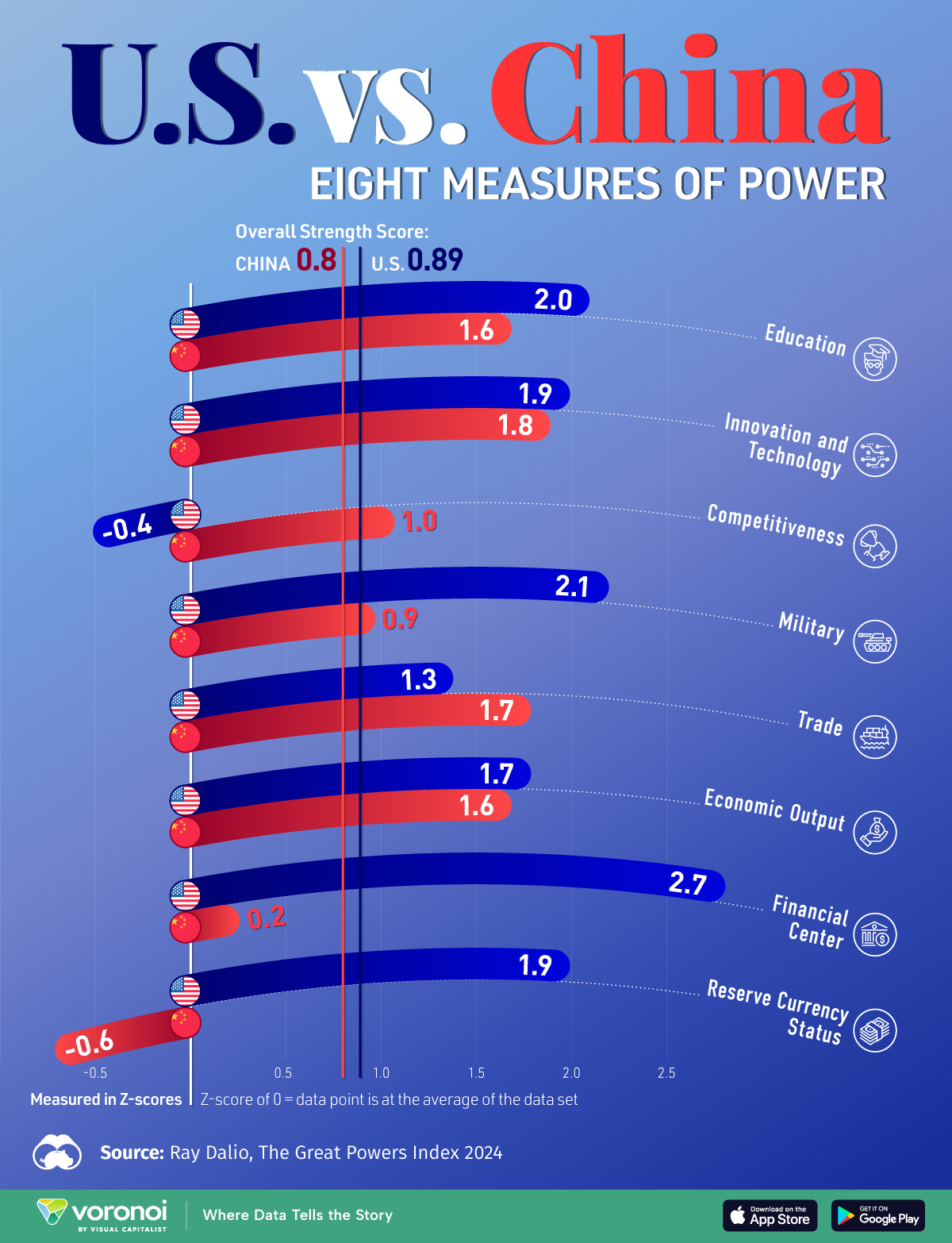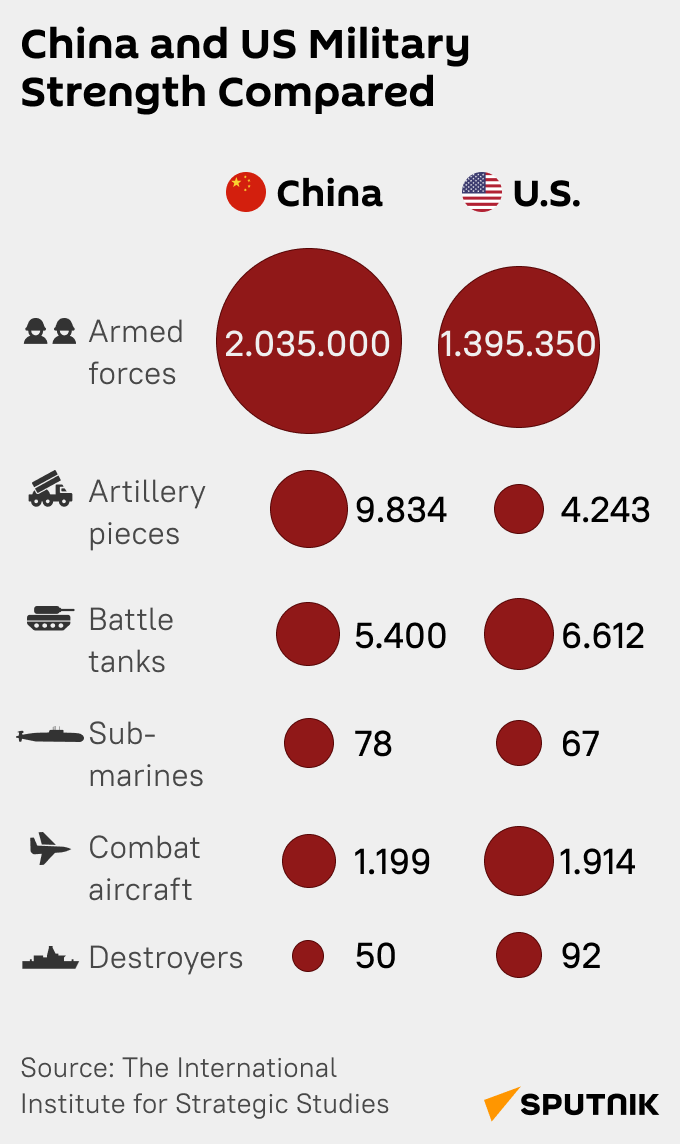
As of 2025, the military balance between China and the United States has evolved significantly, with China making substantial advancements in certain areas. Here’s a comparative overview:Diario AS+2Business Insider+2IndexMundi – Country Facts+2
🇨🇳 China
- Personnel: Approximately 2 million active-duty members, with the People’s Liberation Army (PLA) encompassing Ground Forces, Navy, Air Force, Rocket Force, and Strategic Support Force.IndexMundi – Country Facts
- Naval Strength: China’s People’s Liberation Army Navy (PLAN) has become the world’s largest by ship numbers, producing warships at a rate of about 6 for every 1.8 built by the U.S. Business Insider+1Wikipedia+1
- Aircraft Carriers: China operates two active carriers, with a third undergoing sea trials and a fourth, the Type 004, under construction. The Type 004 is expected to feature nuclear propulsion and electromagnetic catapults, positioning it as a formidable asset in naval operations. Wikipedia+1Wikipedia+1
- Missile Capabilities: China has developed advanced hypersonic missiles capable of targeting U.S. aircraft carriers, potentially neutralizing them within minutes in a conflict scenario. Diario AS
- Strategic Infrastructure: The construction of the “Beijing Military City,” a vast underground command center, underscores China’s commitment to enhancing its military command and control capabilities. Business Insider
🇺🇸 United States
- Personnel: Approximately 1.39 million active-duty members, with branches including the Army, Navy (encompassing the Marine Corps), Air Force, Space Force, and Coast Guard.IndexMundi – Country Facts
- Naval Assets: The U.S. Navy maintains a fleet of 11 nuclear-powered aircraft carriers, each serving as a mobile airbase with a complement of advanced fighter jets.
- Technological Edge: The U.S. military continues to lead in areas such as stealth technology, cyber warfare, and satellite communications.
- Global Presence: The U.S. maintains a vast network of military bases worldwide, ensuring rapid deployment capabilities and a global strategic reach.
🔍 Comparative Insights
- Naval Dominance: While the U.S. Navy remains technologically advanced, China’s rapid shipbuilding and increasing carrier capabilities are narrowing the gap.
- Missile Threats: China’s development of long-range, precision-guided missiles poses a growing challenge to U.S. naval assets in the Indo-Pacific region.
- Strategic Infrastructure: China’s investment in extensive underground facilities indicates a focus on enhancing survivability and command resilience during conflicts.
📈 Military Expenditure (2020 Estimates)
- China: Approximately 1.7% of GDP.IndexMundi – Country Facts
- United States: Approximately 3.73% of GDP.IndexMundi – Country Facts
🧭 Strategic Outlook
China’s military modernization, particularly in naval and missile technologies, is reshaping the strategic landscape. While the U.S. maintains a qualitative edge, China’s quantitative growth and strategic infrastructure developments are enhancing its regional influence and deterrence capabilities.




Certainly! Here’s an updated comparison of China and the United States’ military strengths as of 2025, incorporating the latest developments and visual aids:
🇨🇳 China vs 🇺🇸 United States Military Strength (2025)
🔢 Personnel & Structure
- China: Approximately 2.03 million active-duty personnel across five branches: Ground Forces, Navy (PLAN), Air Force (PLAAF), Rocket Force, and Strategic Support Force. IndexMundi – Country Facts
- United States: Approximately 1.39 million active-duty personnel, organized into Army, Navy (including Marine Corps), Air Force, Space Force, and Coast Guard. IndexMundi – Country Facts
🚢 Naval Capabilities
- China: Rapidly expanding its naval fleet, producing warships at a rate of approximately 6 for every 1.8 built by the U.S.
- United States: Maintains a fleet of 11 nuclear-powered aircraft carriers, each serving as a mobile airbase with advanced fighter jets.
✈️ Air Superiority
- China: Possesses a growing fleet of over 2,100 fighter aircraft and 200 bombers, with production rates surpassing those of the U.S. Business Insider
- United States: Continues to lead in stealth technology, cyber warfare, and satellite communications, maintaining a technological edge in air combat.
💰 Military Expenditure
- China: Approximately $216 billion annually, about 2.1% of GDP. Visual Capitalist
- United States: Approximately $732 billion annually, about 3.8% of GDP. Visual Capitalist
🛰️ Strategic Infrastructure
- China: Developing the “Beijing Military City,” a vast underground command center spanning approximately 2.5 miles, potentially the largest military headquarters in the world. Business Insider
- United States: Maintains a global network of 133 military bases, ensuring rapid deployment capabilities and a global strategic reach. Visual Capitalist
📊 Visual Comparison
Here are some infographics that illustrate the military strengths of China and the United States:
- Land Power Comparison (2025)
- Military Comparison in 2023
- Comparative Military Spending
If you have specific areas of interest or need more detailed information, feel free to ask!